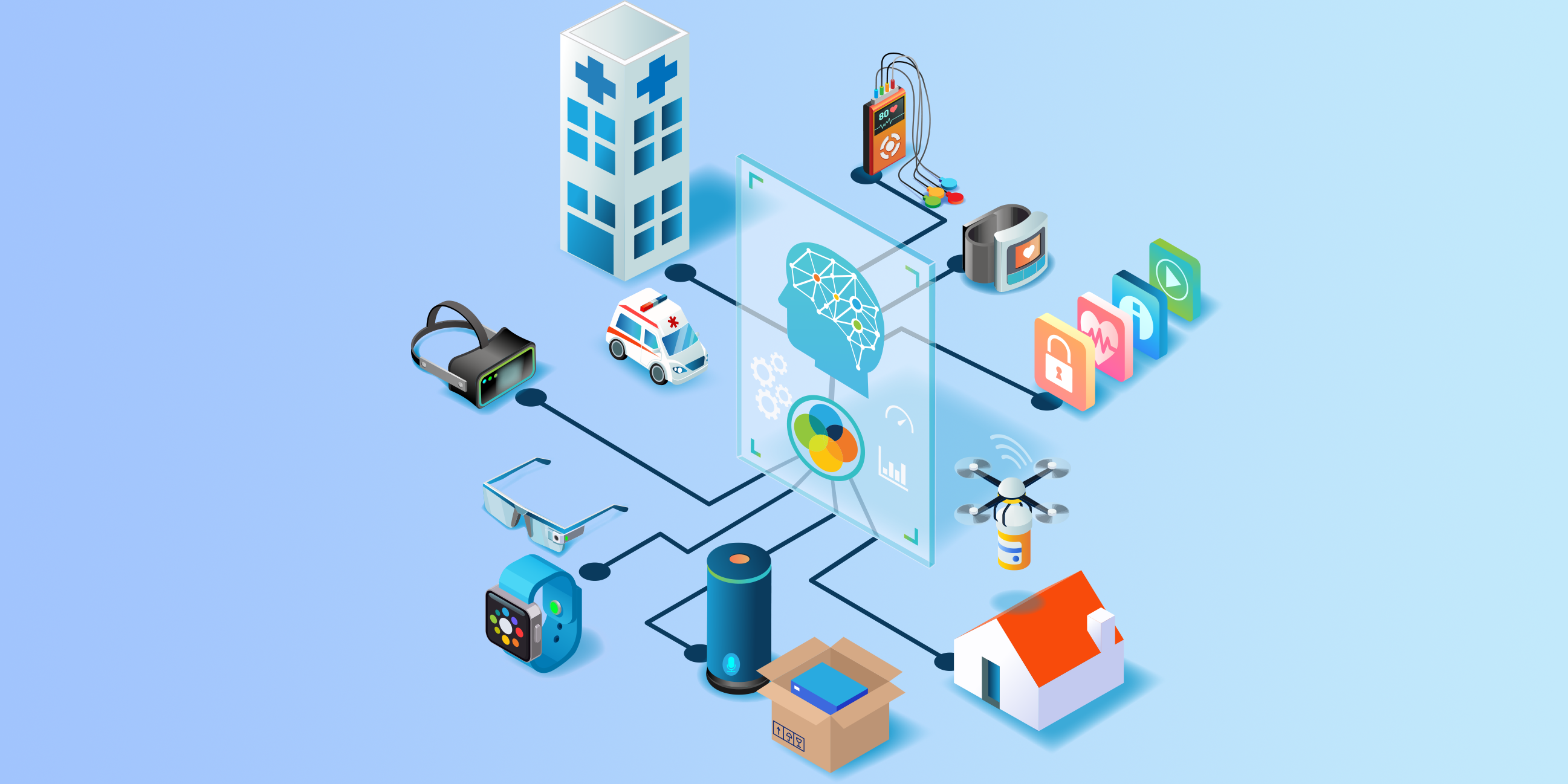On The Tech Glow Up Podcast Live from HLTH 2025, host Nathan C. Bower talks with Life365 CEO Kent Dicks about connecting patients to clinicians remotely and using AI to power virtual care.
Telehealth adoption skyrocketed during the pandemic, with an unprecedented surge in adoption from 12% to almost 70% in weeks. Today, utilization has leveled off at around 40 – 45% with steady gains continuing because patients and clinicians and have both become accustomed to the convenience of receiving and providing services outside the point of care. Beyond that, continued demand on clinical resources makes it far more efficient to deliver services remotely to relieve in-office demand. Going The trends indicate that doctor visits are becoming more a hybrid with some mandated in-person visits once or twice a year, while other visits can take place virtually using technology like computers, smart phones, tablets, and even smart TVs.
Some regulatory changes that facilitated the expanded use of telehealth have been made permanent. Going forward, the next logical companion products to Telehealth will come in the form of Remote Patient Monitoring (RPM) solutions, as well as Remote Therapeutic Monitoring (RTM) services. The Center for Medicaid and Medicare Services (CMS) are rolling out new guidelines and reimbursement codes starting January 1, 2022, which will continue to facilitate adoption. Combining these services together with Telehealth, will enable the market to evolve and deliver new forms of Virtual Care remotely, wherever the patient is located.
The most significant friction points to adoption of Virtual Care, Telehealth and RPM are centered around clinical workflow. Solutions cannot be implemented individually and disparately. The need for integrated platform solutions is a necessity, to streamline individual implementation, enhance workflow, and drive user adoption through personalization.
Areas of opportunity to bundle and integrate services and solutions include:
-
- Personal Emergency Services (PERS) / Independent Living.
People are looking to live more independently as they age. The demand for PERS solutions continues to grow to meet this demand. Telehealth and RPM are the next logical products for these companies that already have monitoring in place for emergencies. They can now expand services to include more activities of daily living, including health and care monitoring so that people can stay in their homes longer and avoid the increased costs of assisted living or nursing care. - Telehealth Platforms.
Multi-Billion dollar channels are emerging for payors and providers ("PayViders") to help control cost and become more “connected” to their members. These channels are anchored by Telehealth companies that have been focused on episodic care, but need to transition to chronic care management (CCM), which requires connection into the home through the “Digital Front Door” of their members at home. This will enable efficient use of benefits to provide early insights into patient / member health status and allow proactive intervention that provide better outcomes and make their financial models of care work. - SNF@Home / Assisted Living.
Initiatives are underway to eliminate the "Devils Triangle" from the home to hospital to skilled nursing facilities, back to Home. More emphasis is being placed on providing Skilled Nursing directly in the patients home. The need to provide connected tools to deliver the same services at home is necessary to increase clinical efficiency, reduce costs, and drive patient adherence and satisfaction. - Physician Practices.
New reimbursement codes have been put in place for physician practices to bill for Chronic Care Management (CCM), RPM and now Remote Therapeutic Monitoring (RTM) as of January 1, 2022. To enable physicians, integrated platforms with a complete suite of tools is needed to help select, onboard, engage and monitor patients remotely – and allow providers to bill for their Virtual Care services. - Home Healthcare.
People are wanting to live in their homes longer before transitioning to Independent or Assisted Living and are willing to “self-pay”, to achieve comfort, extend quality of life and ultimately save significant amounts of money. Home Healthcare is looking to expand their revenue streams, with physical and Virtual Care in the home becoming more prevalent. - Hospital@Home / Providers.
New initiatives are underway with CMS to transition treatment and monitoring to enable hospital at home care – and provide parity in billing. It is critical under these initiatives that the same services provided at the hospital must be provided at home. This includes the surveillance and monitoring of patients through connected vital sign monitoring at a central location. - Electronic Health Records.
The goal in scaling RPM or Virtual Care program is to eliminate friction points in the deployment and care. One friction point is ordering solutions – to streamline the process, physicians need to order via their EHR, with vetted RPM solutions aligned to patient needs, delivered to the home, with patient data flowing into the clinical back-end systems seamlessly. With the 16 days of readings required under the current CPT codes, it is critical that ordering, onboarding, remotely engaging the patient and data transmission go smoothly through a complete integrated platform. - Integrated Health Services.
Many companies are providing the stratification, engagement and care of patients, but they are not linking connected solutions to these offerings – which is critical to completing the entire “Value Chain of Care”. Many progressive companies that participate “at-risk” with a population need the earlier insights provided from the connected data at home to make their financial models of care work. - Large Self-Insured Employers.
The need for self-insured employers to provide connected solutions to their employees and retirees is growing. Five percent of the popiulation consumes 50% of healthcare costs – typically in a person’s later years. Employers that have provided retiree health benefits, such as Union Shops, could face very expensive costs if they do not provide earlier intervention and proactive care that is enabled by the Virtual Care of their retirees – remotely. - Retail Pharmacy.
Pharmacists in 35 states now have the designation of "Provider Status" so that they can titrate medical and review patient conditions remotely via Telehealth and Remote Patient Monitoring. This becomes incredibly useful in rural locations where there tends to be a shortage of physician resources. Connected Virtual Care solutions enable the Pharmacist to deploy vital sign equipment to home as well as rapid diagnostics, while monitoring from the bench of their pharmacy – and billing for the remote monitoring and care. - Clinical Trials / Pharmaceutical.
Virtual Care is becoming incredibly useful in Clinical Trials by pharmaceutical companies. Along with the Covid pandemic, came doubt as to whether Clinical Trails could carry on, but they did, enabled by the use of RPM solutions, bringing in critical data for trials collected from participants remotely. Pharmaceutical companies want to get closer to the patient, closing the loop to provide care from the pharmaceutical company, pharmacist, patient and provider – all from a common platform. - Wearables / Digital Therapeutics.
To scale across larger populations of patients, RPM must transition from later intervention at the “complex care” stage to engaging proactively, deploying earlier and ahead of the cost curve. This requires “light” technology and a variety of connected solutions, including disposable wearables, sensors and patches. These solutions will be driven by AI systems, using in an exception based processing context to deal with a larger number of patients earlier – comparing individuals to themselves to see if they are "normal" or out of patten offering lighter intervention ie: hopefully "Nudging" them back into compliance.
- Personal Emergency Services (PERS) / Independent Living.
Many of these examples above require an RPM component to connect and gather cost-effective actionable data from outside the traditional point of care. RPM will continue to grow in popularity and evolve with innovative methods to connect people with their heatlhcare providers, bundled solutions together to deliver more personalized, effective, and efficient care.
Latest Resources
Stay informed with our latest news, resources, and insights!
-1.png)



-1.png)